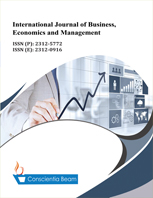CEO gender and firm performance: It is the predecessor-successor gender combination that matters!
DOI:
https://doi.org/10.18488/62.v10i4.3527Abstract
This study was set to provide a response to the following question: What is the relationship between the gender of CEO successor and firm performance? We analyzed data from 4,338 CEO successions in companies listed in China Stock Exchanges from 2001 to 2016. We utilized Propensity Score Estimation for multiple treatments to operationalize different gender combinations in CEO succession (male-to-male, male-to-female, female-to-male, female-to-female). Findings suggested that it is CEO succession with different gender instead of a female successor that hurts firm performance. We also found that the power of female successors serves as a moderator: it can mitigate the negative impact of different-gender CEO succession on firm performance. The results also indicated that firm ownership (state-owned vs. non-state owned) influences the relationship between female-male CEO succession and firm performance. Practical implications: The findings imply that the gender of the CEO per se may not be the prime factor in firm performance, instead what firms should pay attention at is to smoothen the succession processes when a CEO of different gender is appointed.

